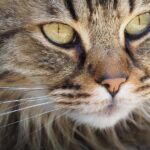As cat owners, we face the unique challenges of keeping our feline friends healthy and happy. One common concern that many cat parents encounter is the dreaded hairball. This article will delve into the best cat foods for preventing hairballs, discussing their ingredients, benefits, and how they can improve your cat’s digestion.
Understanding Hairballs in Cats
Hairballs, or trichobezoars, are clumps of hair that accumulate in a cat’s stomach. They form when cats groom themselves and ingest hair, leading to a buildup that may eventually be vomited or expelled through the stool. While hairballs are a normal part of a cat’s grooming routine, frequent occurrences can indicate underlying health issues such as allergies or gastrointestinal problems.
Why Do Cats Get Hairballs?
Grooming Habits: Cats have a natural instinct to groom themselves, and long-haired breeds tend to ingest more hair.
Diet: A diet lacking in fiber can lead to hairballs, as fiber helps to move hair through the digestive system.
Stress and Anxiety: Stressful situations can lead to excessive grooming.
Seasonal Changes: Cats typically shed more during the spring and fall, increasing the likelihood of hairballs.
Signs of Hairballs
It’s crucial to know the symptoms associated with hairballs to ensure your cat is healthy. Signs include:
- Vomiting
- Coughing
- Lack of appetite
- Constipation or difficulty defecating
- Excessive grooming
If your cat is experiencing severe discomfort or frequent hairballs, consult a veterinarian for further advice.
Importance of Diet in Hairball Prevention
Nutrition plays a crucial role in managing hairballs. A diet that includes sufficient fiber can help facilitate the passage of hair through the digestive system. Moreover, certain foods contain natural ingredients designed to minimize hairball formation.
Essential Features of Hairball Control Cat Foods
When selecting a cat food specifically for hairball prevention, look for the following features:
High Fiber Content: Foods rich in fiber help to push hair through the digestive tract.
Natural Ingredients: Ingredients like chicken, turkey, and fish are excellent sources of protein and promote overall feline health.
Healthy Fats: Omega fatty acids improve skin health and reduce shedding.
Digestive Aids: Probiotics and prebiotics can enhance gut health.
Grain-Free Options: Some cats are sensitive to grains, so grain-free formulas might be beneficial.
Top 10 Cat Foods for Hairball Prevention
Here’s a list of some of the best cat foods that aid in hairball prevention, along with their key features:
1. Royal Canin Feline Health Nutrition Hairball Care
- Protein Content: 30%
- Fiber Content: 8%
- Key Features: This formula offers a tailored blend of fibers to help reduce hairball formation. Additionally, it contains among the highest protein contents, ensuring your cat’s muscle development stays strong.
2. Hill’s Science Diet Adult Hairball Control
- Protein Content: 27.5%
- Fiber Content: 12%
- Key Features: Formulated with natural fiber, this food promotes healthy digestion and reduces hairball occurrence. It’s perfect for adult cats and supports optimal weight management.
3. Purina Pro Plan Hairball Management Chicken & Rice Formula
- Protein Content: 40%
- Fiber Content: 14%
- Key Features: This formula contains live probiotics and is designed to promote gut health. The high protein content aids in lean muscle mass development while managing hairballs effectively.
4. Iams ProActive Health Sensitive Digestion Hairball Care
- Protein Content: 28%
- Fiber Content: 7%
- Key Features: This cat food uses a gentle formula designed for sensitive digestions, including a special blend of fibers to help control hairballs while minimizing gastrointestinal upset.
5. Nutro Perfect Portions Hairball Control
- Protein Content: 30%
- Fiber Content: 10%
- Key Features: This canned wet food option is perfect for picky eaters. It contains real chicken and is free from artificial preservatives, providing a nutritious meal.
6. Blue Buffalo Indoor Health Adult Cat Food
- Protein Content: 30%
- Fiber Content: 14%
- Key Features: Made with real chicken and wholesome grains, Blue Buffalo includes its LifeSource Bits—antioxidant-rich kibbles that promote immune health while reducing hairball formation.
7. Wellness CORE Grain-Free Indoor
- Protein Content: 38%
- Fiber Content: 10%
- Key Features: This grain-free cat food is packed with high protein and fiber content, ensuring your cat’s dietary needs are met while minimizing hairballs and promoting healthy skin.
8. Merrick Grain-Free Texas Beef & Sweet Potato Recipe
- Protein Content: 38%
- Fiber Content: 6%
- Key Features: Excellent for cats who prefer a grain-free option, this food contains various fiber sources to help with hairball control and digestive health.
9. Tiki Cat Aloha Friends! Luau Chicken & Brown Rice
- Protein Content: 36%
- Fiber Content: 8%
- Key Features: This delicious canned cat food is made with real chicken and brown rice. It’s rich in moisture and provides a great protein source while aiding hairball prevention.
10. Fromm Cat Food Four-Star Salmon A La Veg
- Protein Content: 28%
- Fiber Content: 6%
- Key Features: Known for its high-quality ingredients, Fromm’s formula includes salmon and vegetables that provide rich omega fatty acids, reducing shedding and hairball formation.
Additional Tips for Hairball Prevention
While choosing the right food is critical for managing hairballs, there are other strategies to consider:
Regular Grooming
Regular brushing helps reduce the amount of loose fur that cats ingest. Long-haired varieties may require daily grooming, while short-haired breeds may benefit from bi-weekly sessions.
Hydration
Ensure your cat is drinking plenty of water. Proper hydration aids in digestion and helps flush hair through the system.
Maintain a Stress-Free Environment
Try to keep your cat’s environment as stress-free as possible. This reduces excessive grooming—a common cause of hairballs.
Supplements for Hairball Control
Consider adding supplements that contain natural fibers, such as psyllium husk or pumpkin, which aid digestion and reduce hairballs.
Conclusion
Managing hairballs can be an integral part of maintaining your cat’s health and well-being. By choosing a cat food designed to minimize hairballs and incorporating additional care strategies, you can significantly reduce the frequency of these occurrences. Remember that every cat is different; it may take time to find the perfect food suitable for your feline friend.
For any ongoing concerns or if you notice signs of discomfort in your cat, don’t hesitate to consult your veterinarian. Ultimately, a healthy diet combined with proper care will keep your cat purring happily—hairball-free!
Featured Image Credit: Pixabay


